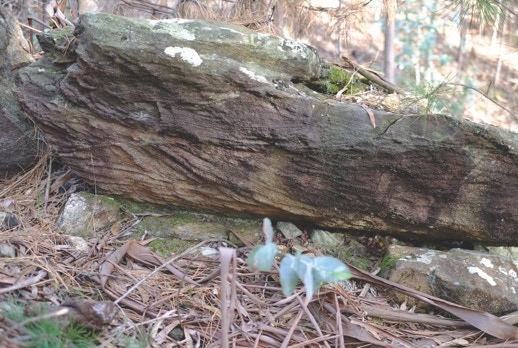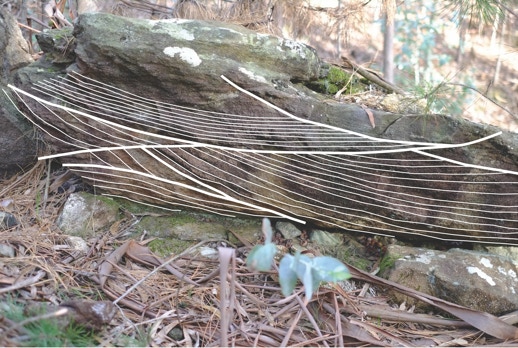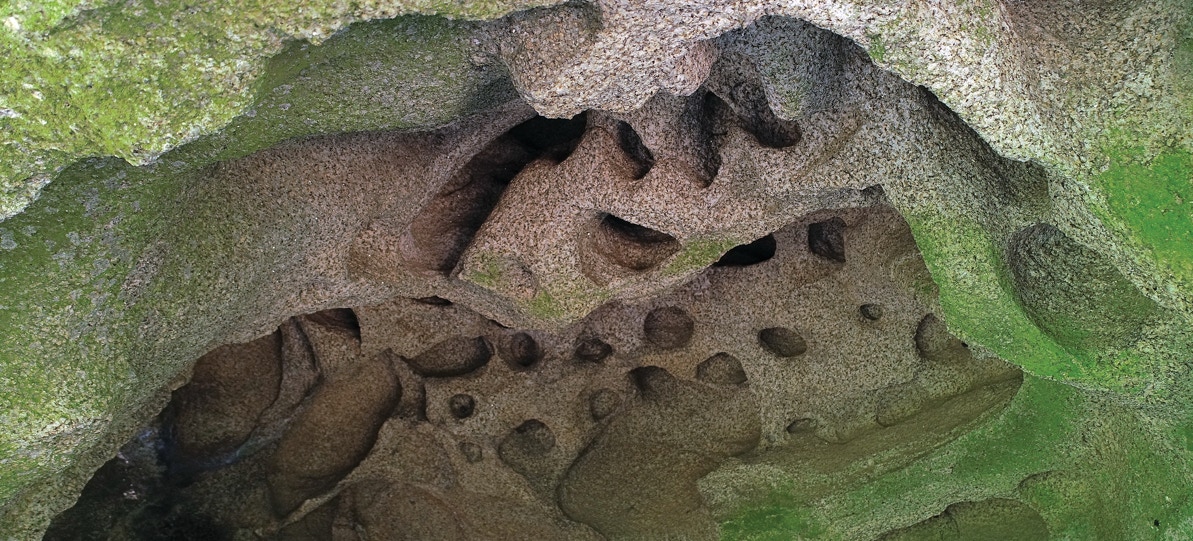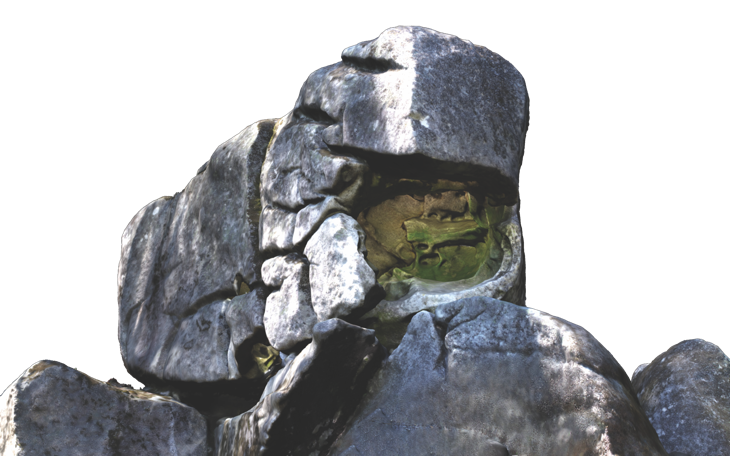In rare circumstances not yet understood, rocks decay forming small cavities that look like a honeycomb. These cavities are called tafoni (word of Italian origin that means breach or window). Here, at Penedo Furado, the phenomenon is even more peculiar since tafoni developed inside the granite block!

Rocks are not forever after all...
Rocks, when exposed to the action of water, air, and others, undergo a series of physical and chemical processes which modify their minerals. As a consequence, rocks become less cohesive and changes in their colour frequently take place. These series of transformations are called weathering.
Other examples of weathering in this geopark
Local Natural Monument
Planalto Granítico das Chãs de Santa Luzia
Local Natural Monument
Turfeiras das Chãs de Arga
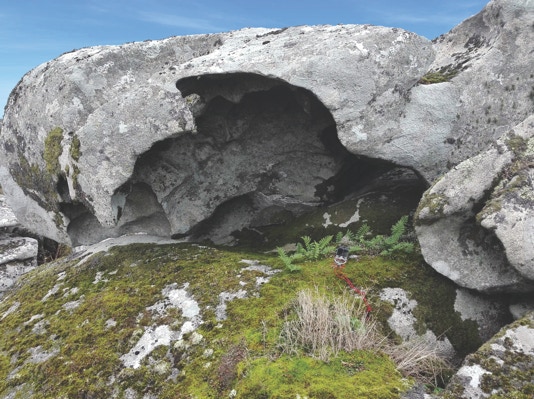
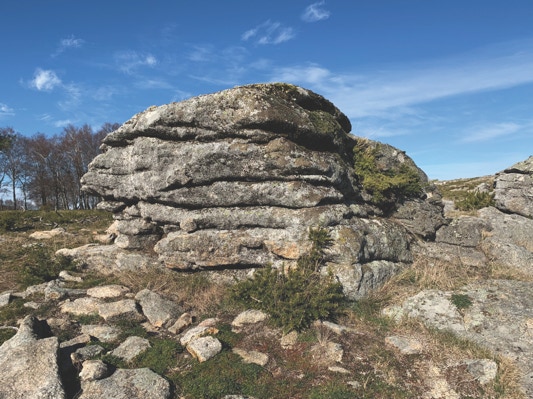
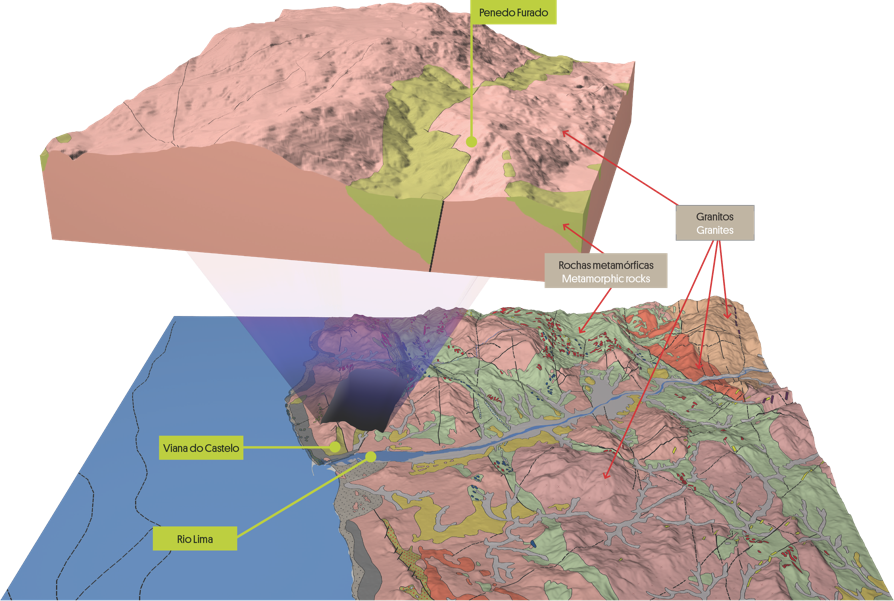
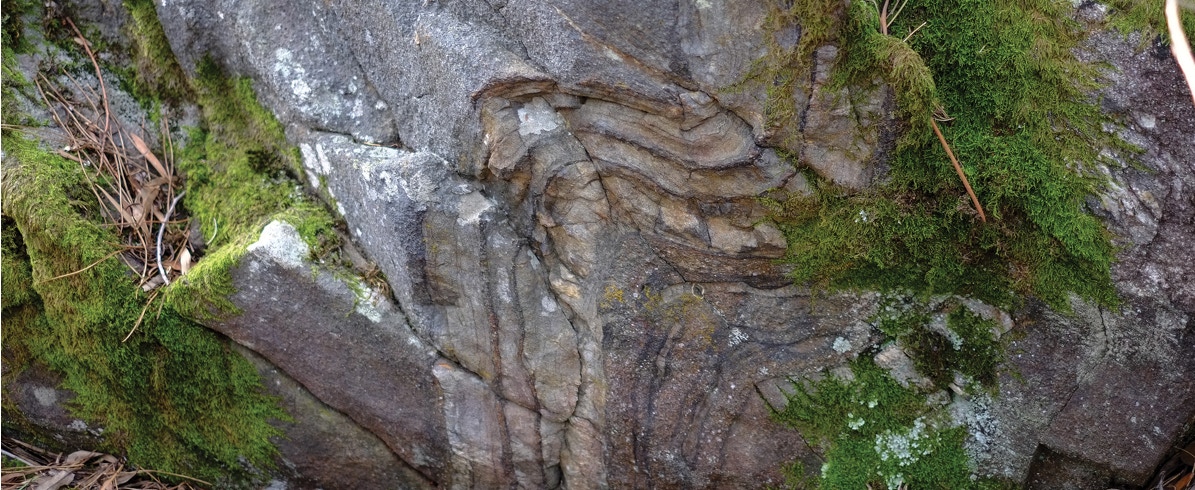
So close and so different

Three hundred million years ago, metamorphic rocks surrounded the magma which originated the granite of Penedo Furado. Today, traces of those metamorphic rocks are still visible in this place.
The rock was deformed while it was still in depth, originating folds.
Those metamorphic rocks began to be formed when sand (sediments) were transported and deposited by water. Waves of sand were formed during this process accumulating on the top of each other and giving rise to overlapping concave structures called cross-bedding.
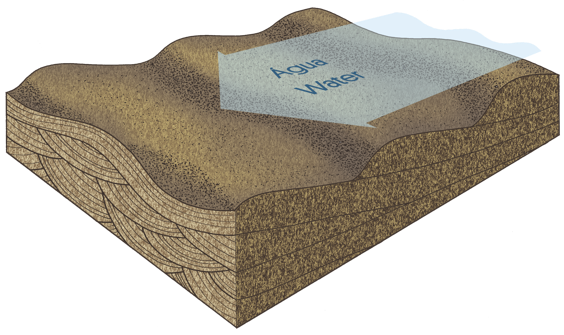
Cross-bedding formation
Later, the sediments originated a compact sedimentary rock in which the waves of sand were recorded. By subsequent action of pression and heat, the sedimentary rock was transformed into the present metamorphic rock.

Try to find cross-bedding in the Penedo Furado surroundings.
